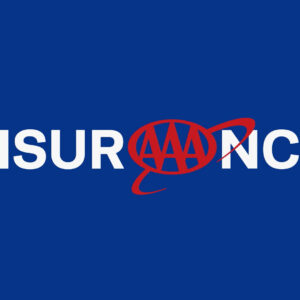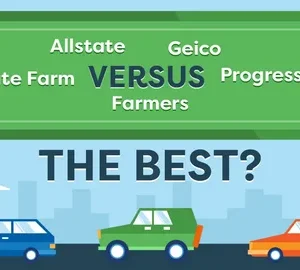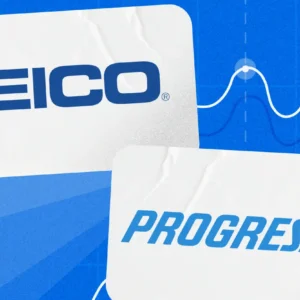Introduction: Why High-Risk Drivers Need an SR‑22—and Why It Matters
If you’re labeled a high-risk driver—due to offenses like DUI, traffic violations, or driving without insurance—your state may require an SR-22 filing to get or keep your license. Though not insurance itself, this certificate of financial responsibility proves you have at least the minimum liability coverage mandated by law. Falling short here means you’re putting your driving privileges at risk (en.wikipedia.org).
But beyond compliance, SR‑22s come with higher insurance premiums, extra fees, and a host of nuances. In this guide, we break down everything from cost factors and coverage options to insider tips that can save you hundreds—often while helping you rebuild trust with insurers.
📘 What Is SR‑22 Insurance? (It’s Not What You Think)
SR‑22 ≠ Insurance Policy
To clarify, the SR‑22 form is not an insurance policy; it’s a piece of paper filed with your state’s DMV to certify you carry minimum liability coverage .
Why You Might Need It
Typically, SR‑22s are required when you:
- Are convicted of a DUI/DWI
- Were caught driving without insurance
- Have a suspended or revoked license
- Commit reckless driving or accrue multiple infractions
Once triggered, you’ll likely need to maintain SR‑22 status for 3 to 5 years depending on state regulations (dohmanlaw.com). Letting it lapse could bring your license back into jeopardy.
Who Are “High-Risk Drivers” — And What It Means for You 🚧
You’re labeled high-risk if:
- Authorities consider you more likely to have premiums claims
- You have poor credit, age, or your car model influences rates.
High-risk drivers pay significantly more for coverage, with typical rates up to 80% higher. Even a few speeding tickets could increase premiums by +43%, while a DUI could mean +79% or more .
“Driving under the influence results in some of the biggest increases.” (businessinsider.com)
How Much Does SR‑22 Insurance Actually Cost?
1. Insurance Premiums
The numbers vary wildly depending on state, violation, coverage type, and driver profile:
- Insure.com: Around $4,174/year (~$348/month) for a DUI case
- Forbes Advisor: Approximately $2,776/year (~$231/month) (forbes.com)
- Breathe Easy Insurance: Ranges between $2,000–$5,600/year
Expect higher rates with more severe violations or poor credit.
2. SR‑22 Filing Fees
You’ll generally see a one-time $25–$50 filing fee (though some insurers may charge it monthly).
3. State-Imposed Fees
Some states require additional reinstatement or administrative fees—check your local DMV.
📊 Comprehensive Cost Comparison Table
| Policy Type | Monthly Premium | Annual Cost | Notes |
|---|---|---|---|
| Standard driver | — | ~$1,070 | Average per Insurance Information Institute (businessinsider.com) |
| High-risk w/ SR-22 | $231 – $348+ | $2,800–4,200+ | Depends on violation & state |
| Progressive SR-22 (min) | — | $662 | Best for basic coverage |
| Progressive SR-22 (full) | — | $1,621 | Full coverage rate |
| Non-owner SR-22 | $30 – $85 | $360 – $1,020 | When you don’t own a car |
How to Secure SR‑22 Filing & Coverage
- Check with your current insurer – Some won’t file SR‑22s or may cancel you.
- Shop around – Compare quotes from multiple insurers, including high-risk specialists.
- Choose coverage wisely – Consider minimum vs. full coverage based on your risk tolerance and finances.
- Push for discounts – Defensive driving courses, automatic payments, vehicle bundling, etc. might still apply to SR‑22 policies .
- Pay promptly and avoid lapses – A single lapse can reset your SR‑22 requirement, and risk license suspension.
- Request re-evaluation yearly – Insurers may lower rates after a year of clean driving (sr22insurance.net).
Coverage Options Explained
- Minimum Liability: Legally required; protects you if you injure others or damage property.
- Collision & Comprehensive (Full Coverage): Covers your vehicle in accidents or theft—more expensive.
- Non-Owner SR‑22: Best if you don’t own a car but need filing for license reinstatement; typically $30–85/month (amaxinsurance.com, nerdwallet.com, sr22insurance.net).
Insurer Breakdown: Who’s Best for SR‑22?
Progressive
- Min coverage: ~$662/year
- Full coverage: ~$1,621/year
- Offers bundling, safe-driving, and student discounts (moneygeek.com)
State Farm
- Great reputation for SR‑22 at ~$782/year for minimum coverage (moneygeek.com)
GEICO, Allstate, Travelers
- Offer SR‑22s but may carry higher premiums—shop and compare quotes.
Specialist High-Risk Providers
- Examples: Dairyland, SafeAuto, The General, Acceptance Insurance—known for lower non-owner rates (sr22insurance.net).
Smart Savings Strategies
- Opt for non-owner policy if you don’t drive daily.
- Enroll in defensive driving or DUI education—may unlock discount.
- Improve credit score – This can significantly reduce premiums (businessinsider.com).
- Bundle multiple policies – Home or renter’s insurance can earn you discounts.
- Pay in full instead of monthly installments.
How Long Do You Need an SR‑22?
- Generally required for 3 years, but can stretch to 5 years for DUI.
- Minor violations may need just 3 years (sr22insurance.net).
- Letting the form lapse resets the clock. Maintain continuous coverage to avoid resets.
When Can I Switch to Standard Insurance?
Typically, after:
- SR‑22 term ends
- Clean driving record for 1–2 additional years
- Improved risk profile (e.g. credit improvement)
Once these are met, insurers may deem you standard-risk again and offer lower premiums.
Common Myths About SR‑22 Revealed
- Myth: “SR‑22 is insurance.”
Truth: It’s documentation, not a standalone policy . - Myth: “High-risk means uninsurable.”
Truth: Specialized insurers will quote, though premiums can be steep. - Myth: “You can’t get full coverage with an SR‑22.”
Truth: You CAN—just expect higher costs .
Testimonials That Speak Volumes
From AMAX Insurance, real users highlight strong service:
“Stephanie…super friendly, very professional…goes above and beyond.”
“Rates are unbeatable!”
“Angelica helped with full coverage in under 20 mins.” (amaxinsurance.com)
These reviews show that while rates may be higher, quality service is still possible.
Wrapping Up: Get Driving Again Without Overpaying
Quick Takeaways
- SR‑22 isn’t a policy—just proof of liability coverage.
- Premiums typically run $231–$348/month (or more).
- Progressive leads for affordability; specialists help non-owners.
- Non-owner policies slash costs when you don’t drive daily.
- SR‑22 lasts 3–5 years—consistent coverage is non-negotiable.
- Fight back with discounts, credit repair, defensive driving, and smart comparison shopping.
Final Advice for High-Risk Drivers
- Dive deep—shop multiple insurers, request SR‑22 quotes upfront.
- Track personal factors—age, credit, vehicle type all play roles.
- Stay legal—never let SR‑22 lapse or coverage gaps occur.
- Reassess annually—your risk level and pricing may improve.
Regaining full coverage and driving freedom is absolutely possible—and much cheaper—if you’re proactive and informed.
Frequently Asked Questions (FAQ)
1. Can I get an SR‑22 without owning a car?
Yes—a non-owner SR-22 policy allows you to file the form, typically costing $30–85/month .
2. What happens if my SR‑22 lapses?
Your insurer must notify the DMV; your license may be suspended or the requirement may reset (en.wikipedia.org).
3. What’s the cost difference between minimum and full coverage?
Minimum SR‑22: ~$662/year (Progressive); Full coverage: ~$1,621/year (moneygeek.com).
4. How long does SR‑22 stay on my record?
Between 3 and 5 years, depending on violation and state .
5. Can I remove SR‑22 before time’s up?
If your state allows and you’ve met the required period and other conditions, yes—contact your insurer post-term .
Final Thoughts
Entering the high-risk category can be a financial shock—but understanding SR‑22 insurance is the first step to
ecovering freedom and financial stability. With smart planning and strategic choices—like non-owner policies, proactive education, credit improvement, and annual shopping—you can minimize costs, rebuild your reputation, and eventually return to standard rates.
In the end, SR‑22 is a hurdle—but not a permanent barrier. Use this guide to find the best coverage at the lowest cost, stay protected, and clear that high-risk label for good.
Ready to compare SR‑22 quotes?
Share your ZIP code or state, and we’ll point you to top-rated providers who specialize in high-risk and non-owner filings.
[Legal Disclaimer Font: This article is for educational purposes only and not legal advice. Insurance laws vary by state.]






